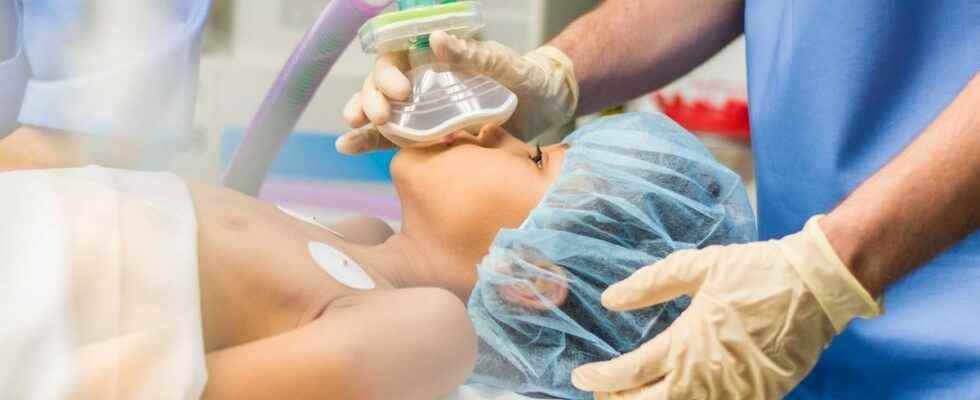Published on
Updated
Reading 2 mins.
What are the consequences of general anesthesia on the human brain and more particularly on the developing brain of a child? This is the question posed by French researchers, who worked in collaboration to understand the mechanisms involved.
In the preamble, Dr Jean-Philippe Salaün, coordinator of this study and member of the INSERM1237 unit of Pr Vivien, wants to reassure all parents: “Today, pediatric anesthesia is safer than ever“.
It is therefore out of the question to invite parents to give up compulsory surgery for their child for fear of general anesthesia. “This type of work is carried out to refine the benefit-risk balance and sheds additional light on our current understanding of general anesthesia.” adds the specialist.
A study that analyzes animals and humans
This work therefore began with a study in mice. In animals, the researchers highlighted behavioral changes, concerning fear, associated with cerebral structural changes, visible on MRI, following general anesthesia. These modifications could be quantified and were estimated at a decrease equivalent to “11% of the volume of periaqueductal gray matter in mice exposed several times to general anesthesia in the postnatal period”. Intrigued by these initial findings, the researchers focused on human beings and children in particular.
A collaborative work
Dr Jean-Philippe Salaün explains that the opportunity to work on data from children aged around ten came from a collaboration with Pr Grégoire Borst, director of the Laboratory of Psychology of Development and Education of the child at the CNRS and thanks to the data that the latter had collected for another study.
“His work focused on the behavioral aspect of these children but also had brain imaging data. We therefore collected all this information to study it in the light of our knowledge of mice, but also in connection with previous published studies. explains Jean-Philippe Salaün.
Slight changes in gray matter
In humans, the analysis therefore focused retrospectively on 102 healthy children, who had received a single general anesthesia for minor surgery in childhood, at the age of four years, on average . It reveals changes at the cerebral level (6% decrease in the volume of the right prefrontal gyrus) and at the behavioral level in the regulation of emotion.
Furthermore, scientists note that “the cerebral modifications observed in this cohort of children were all the more important as the age of exposure to anesthesia for surgery was young“However, still wants to reassure the researcher, the changes observed in the cerebral gray matter are minimal,”these are subclinical markers that have absolutely no impact on the health of children“.
No causal link
In addition, this study does not make it possible to establish any causal link between exposure to general anesthesia and the cerebral and behavioral changes observed.
What is the point of this work then? “It does several things“according to Dr. Salaün.”The first is to open avenues for reflection on the possible remote neurodevelopmental effects of surgery and this also motivates practitioners to pursue this line of research. In the clinic, it also refines the benefit-risk balance a little more and also supports the development of other forms of anesthesia (loco-regional, hypnosis, etc.) or its use at the right dose..
A question that frequently arises for anesthesiologists because on average, one in seven children under the age of three will have undergone surgery with general anesthesia.
